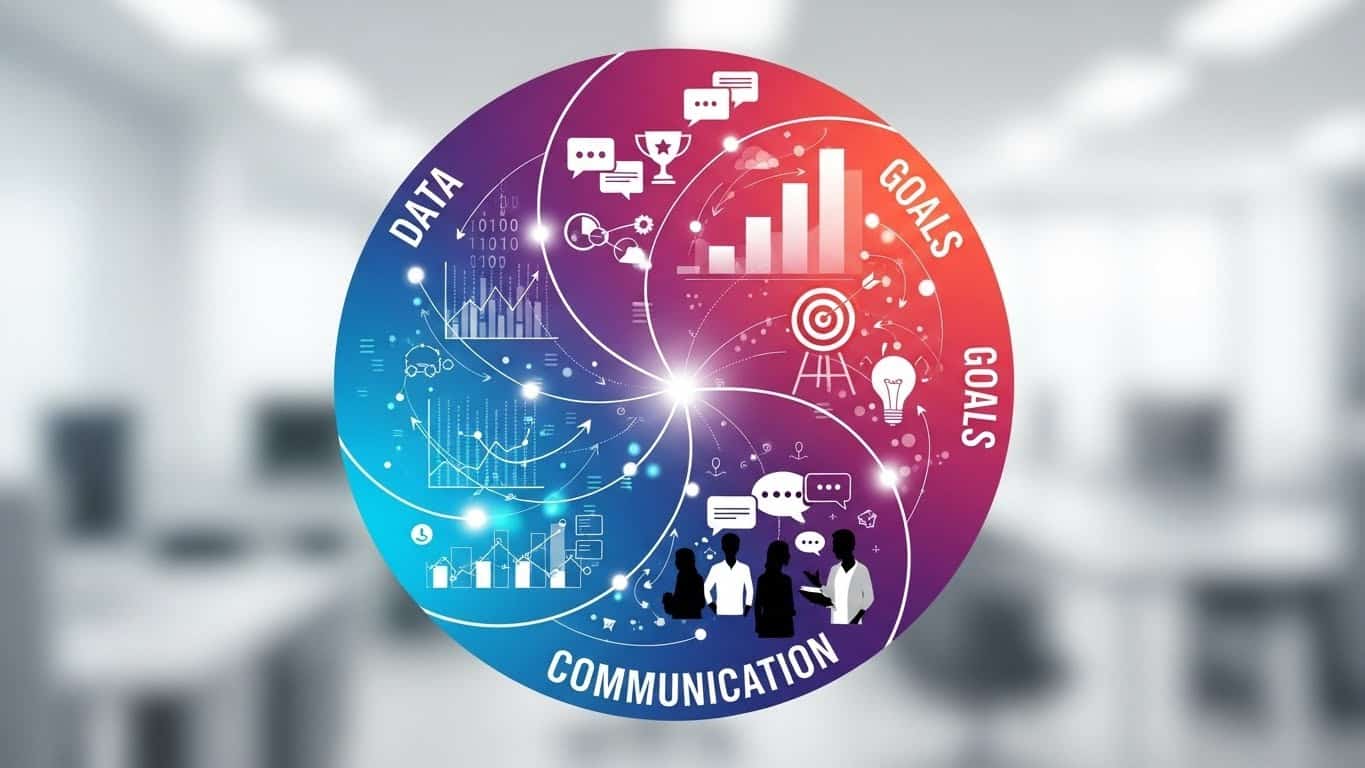3 Ways Technology is Improving Strategic Planning in the 2020s
Blast from the Past
Picture the workplace of 1999.
Executives set strategy in closed-door meetings. Plans are compiled and shared with management in large three-ring binders. Employees track metrics in Excel spreadsheets and share them on floppy disks.
Flash forward to today, and for many businesses, not much has changed. The cloud has replaced floppy disks, but many businesses still rely on spreadsheets to manage their goal tracking. Still too often strategic plans remain confined to big binders on the desks of company executives.
In a world where technology is changing everything, why has strategic planning remained a top-down activity largely stuck in the days of paper and spreadsheets?
For organizations looking to scale rapidly in the 2020’s, the status-quo of the 1990’s simply won’t do. To achieve ambitious growth goals this decade, company strategy needs to be as dynamic and adaptable as technology is. The world is moving faster, and business planning must adapt.
But how will strategic planning and execution change in the coming decade? Let’s break down three critical ways technology is disrupting strategy.
1. Accelerated Communication
The advent of the Information Age means that both the speed at which we communicate information and the audience we are able to reach have increased exponentially. This presents a tremendous opportunity for businesses to improve their organizational alignment and agility by deploying the right technologies.
In his 2014 book, Exponential Organizations: Why new organizations are ten times better, faster, and cheaper than yours (and what to do about it), author and Silicon Valley thought-leader Salim Ismail presents a theory for what enables today’s fastest-growing companies to scale so rapidly and disrupt existing industries.
As Salim describes, social technology, starting with email, dramatically enhanced the ability to communicate information across an organization. This technology can help businesses develop a culture of transparency and accountability that was impossible with the compartmentalized and static methods of yesterday’s spreadsheets and binders.
Employees who understand how their work connects to their organization’s strategic plans will be better engaged and more responsive to changes in strategy. The trust and transparency provided by new communication technology enables a business to scale processes and build alignment in ways that were impossible when strategy lived in binders or confidential powerpoints.
As Venture Capitalist Marc Andressen puts it, “Communication is the basis for civilization and will be a catalyst and platform in the future for more innovations in many industries.”
The strategic planning technology of the future will make strategy a more agile process. Leaders will be able to more effectively communicate strategy to employees and increase engagement in its execution.
A future where organizations communicate openly about strategic plans is already here. And the technology driving this transparency is also driving greater success.
2. FASTer Goals
The right technology can improve strategic execution by changing the goal setting and tracking process from top-down and static to bottom-up and dynamic. Instead of executives setting goals once and checking back in with reports on a monthly or quarterly basis, technology can enable continuous tracking in real-time.
The result is better execution. Align internal data demonstrates that using technology to track your goals overtime leads to 3.5X more goals obtained.
Real-time goal tracking technology outperforms tracking goals in spreadsheets because it speeds up feedback loops and motivates accountability. If a quarterly goal is lagging behind pacing, relying on spreadsheets may delay a team’s ability to react and adjust course. The transparency of a goal-tracking tool, however, allows teams to quickly asses how they are progressing on key tasks and to adjust course accordingly.
As Salim Ismail says, “Scientific results in neuroscience, gamification, and behavioral economics have shown the importance of both specificity and frequent feedback in driving behavioral change and, ultimately, having an impact. Specificity and rapid feedback cycles energize, motivate, and drive company morale and culture.”
This new way of executing strategy requires new technology and new acronyms. The SMART model for goals (Specific, Measurable, Achievable, Realistic, Time-Bound) has been replaced by FAST goals (Frequently discussed, Ambitious, Specific, and Transparent).
Dynamic goals require dynamic technology. In today’s fast-moving world, confining goal tracking to spreadsheets severely hinders a team’s ability to move FAST and achieve strategic goals.
3. Customizable Dashboards for the Whole Team
In addition to improving communication and goal tracking, the right technology can improve a business’s ability to monitor key metrics and KPIs for their business. Similarly to the agility provided by continuous goal tracking, real-time company dashboards provide insights into company performance on the most important metrics for a business’s success.
In his description of the Exponential Organization, Salim Ismail describes this critical tool: “A real-time, adaptable dashboard with all essential company and employee metrics, accessible to everyone in the organization.”
This dashboard provides a level of transparency into company performance that’s simply impossible when metrics are tracked in spreadsheets. The visibility into performance ensures that what matters to the business is not only being measured but that that measurement stays top-of-mind for all employees.
This dashboard, according to Ismail, means “insights and improvements are easier to see and implement.”
While spreadsheets might still be useful for tracking all the different metrics a business monitors, only a real-time dashboard can create the focus and transparency needed to create an engaged and agile team. To cut through the clutter of every company metric, Doblin Group Founder Larry Keeley recommends, “You need to pick the right half dozen contextually for whatever it is you’re trying to achieve strategically.”
Keeping these key strategic metrics visible and updated requires new technology. While the shift to transparent and real-time monitoring is a drastic change from the world of spreadsheets and confidential presentations, these dashboards have already become a critical tool for fast-growing organizations.
Final Word
Technology has already led to significant changes in the structure of our economy and society. It’s leading to significant shifts in the way we work as well. A move towards remote work and agile processes has taken place at many innovative companies. A transformation of how businesses set strategy and scale up is growing more evident every day.
Spreadsheets and printouts don’t just represent an outdated way of communicating and tracking performance; they represent a failure to adjust to a world where employee engagement and input are essential to achieving long-term goals.
New technologies are driving a transition away from waterfall-style leadership in matrix organizations to an organizational structure that prizes individual accountability and radical transparency.
This new workplace culture is key for high performing teams. Align’s data showed that employees more likely to recommend their workplace to friends or family, also achieved more priorities. Employee engagement is not just about retention; it’s critical to driving execution.
In the end, spreadsheets will likely remain an integral part of business tracking for a long time. But the communication, goal tracking, and dashboarding tools available with new technology mean relying on spreadsheets alone for executing strategy will not be agile enough to remain competitive in the next decade.
As new tools and technologies emerge, the organizations that will grow in the 2020’s will utilize new technology to build cultures of accountability and achievement. The world changes quickly and so must the tools companies use to adapt to it.
To learn how software designed to enable strategic planning and execution can help your organization achieve its goals, join an Align Advisor for a demo today!





